Hi-tech dreamcatcher defeats sleep amnesia
- Published

What happens when we dream and can we harness it to improve our waking lives?
When Adam Haar Horowitz took to the stage at a conference dressed as a lotus flower, he raised eyebrows.
Then, when he started hitting computers and making gong noises, jaws dropped.
He was acting out a dream he had recently had to illustrate how our night-time fantasies can influence our waking lives, and how technology can help us access them.
It is a subject close to Mr Horowitz's heart.
"Dreams are such a strange, murky, inaccessible space and there is so much poetry, metaphor and analogy in them," he told the BBC when it visited him at the Media Lab in the Massachusetts Institute of Technology.
"The idea that you can take something concrete - a technology - that can help you access that poetic and metaphorical side of your own cognition is really exciting."
To achieve this he has invented a hand-worn device he calls Dormio.
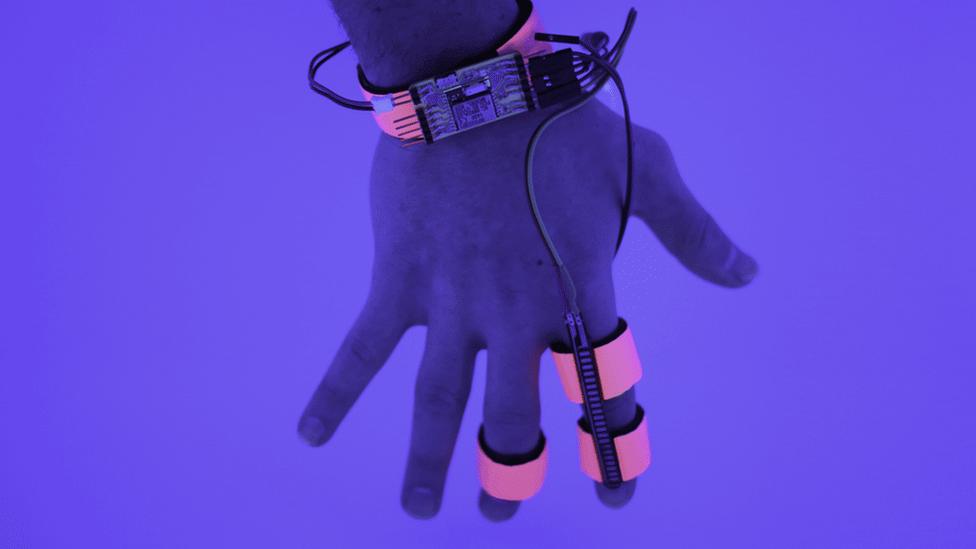
The Dormio device has no wires unlike a lot of equipment used to monitor sleep patterns
It collects biosignals that in turn track transitions in sleep stages - such as a loss of muscle tone, heart rate changes, and alterations in skin conductance.
The goal is to study a particular stage of sleep - the period between wakefulness and deep sleep, known as hypnagogia.
It is a period of slumber which has fascinated scientists and artists for hundreds of years.
Thomas Edison, Nikola Tesla, Edgar Allan Poe, and Salvador Dali all attempted to access this state by napping with a steel ball or similar object in their hands. When they fell into deeper REM (Rapid Eye Movement) sleep, they would drop the object, waking themselves before they forgot the hypnagogic imaginings.
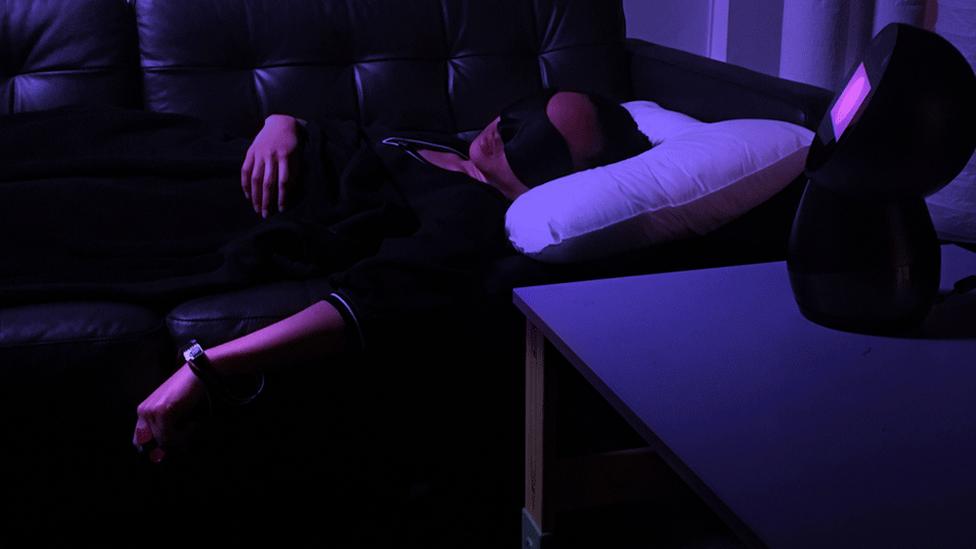
The hand-worn device communicates to an app or a home robot such as Jibo
The Dormio gadget is connected to a smartphone app or robot, which speaks word prompts to the subject as they slip into deeper sleep. These words can be used to influence their dreams or to knock them back into lighter sleep.
"We have found that in the subjects we tested, those words reliably entered the hypnagogic dreams as dream content," said Mr Horowitz.
"After this slight wake-up, we initiate a conversation about dream content with users via the Jibo social robot and record anything that is said, as hypnagogic amnesia is reported and we don't want people forgetting their useful ideas."
After this conversation, the system lets users drift back towards sleep, interrupting again when the biosignals suggest they are falling into deep sleep.
"This is done repetitively to intercept dreams and extract dream reports," said Mr Horowitz.
So far it has only been tested on 15 people but the hope now is to widen the trial and eventually make it commercially available.
"I see a future in which sleep is more useful and more accessible to us, where we understand it better and where we have more possibilities for influencing it and extracting the cognition that goes on inside it," Mr Horowitz told the BBC.
Learning what goes on in dreams will help the wearer consolidate their memories, improve their learning as well as influencing how they dream, he added.
"There is this overnight period which we largely ignore but which is so crucial to how we remember, how our emotions balance out during the day, how we deal with trauma and how we learn - and we just kind of ignore it; that is very weird to me."
Greatest desires

Centuries of research have gone into understanding what happens when we sleep
We spend a third of our lives sleeping but precious little is really known for sure about what happens when our heads hit the pillow.
Sigmund Freud famously believed that dreams allow us to fulfil our greatest desires. Other theories suggest that dreaming is a way to process and understand emotions and events, perhaps a method of storing less important memories or even a way of training our brains for threats that might await us when we are awake.
It is generally agreed that people dream between four and six times a night and forget about 90% of the dreams they have had.
Antonio Zadra, a psychology professor at the University of Montreal, believes that dreams are designed to be forgotten.
"We spend six years of our lives dreaming, of which we only remember a small sliver. If we were meant to be remembering more, that would be a colossal waste of time," he said.
While the dreams in deep REM sleep are, according to Prof Zadra, "impervious to external attempts to influence them", hypnagogic dreaming is easier to influence, although he is not convinced that this needs the help of new technology.
"The metal ball works really well too. The MIT system is just fancy-made tech that is doing the same thing and could be over-complicating the process.
"But, if someone is interested in exploring the images they have when they are asleep, then a device like this could be useful."
'Journey of self-discovery'

Why do we dream and should we be trying to interfere with the process?
Mr Horowitz admits there are ethical questions that need to be thought about before engaging with this enigmatic part of our daily routine.
"How much of yourself do you want to access?" he ponders.
"How much power do you want to have there? How much do you want to be careful about messing with your own biosignals?"
As well as creating the tools that allow people to understand the different stages of sleep, he plans to share some of the vast trove of literature on the subject "in an accessible way" so people can decide for themselves what they use their dream-interrupting technology to achieve.
Ultimately, he sees it as a part of the journey of learning about oneself.
"The waking you will be more connected to the sleeping you and that connection between the two is a form of self-discovery," he said.
- Published22 June 2018
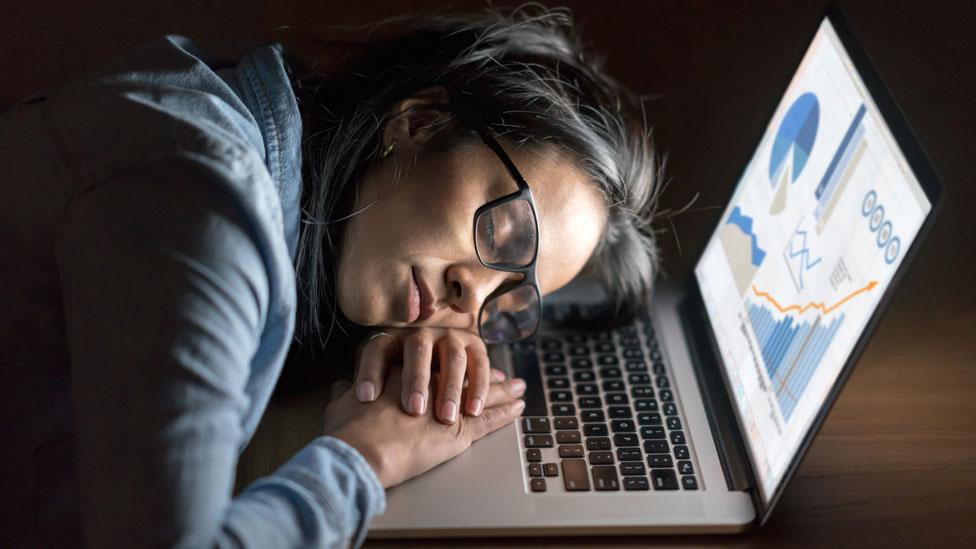
- Published16 May 2018
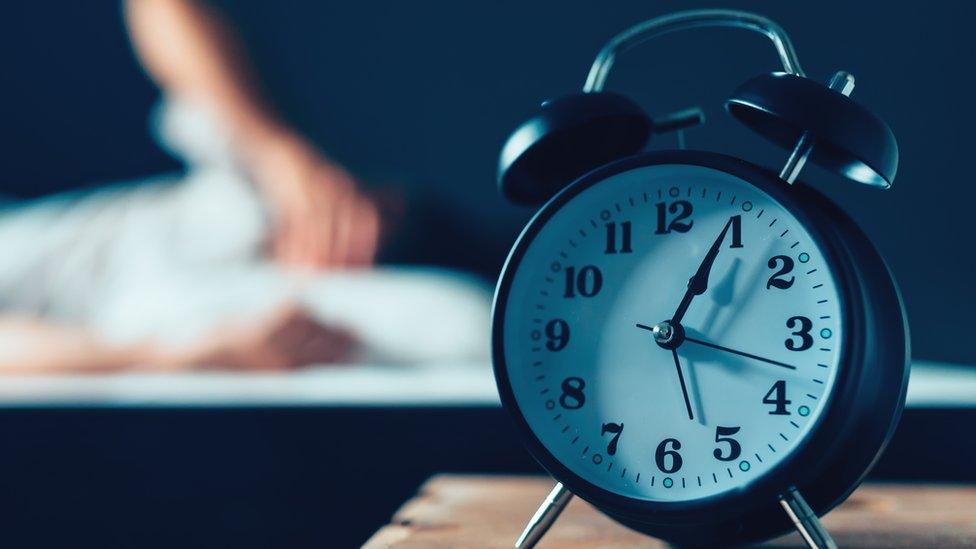
- Published14 May 2018
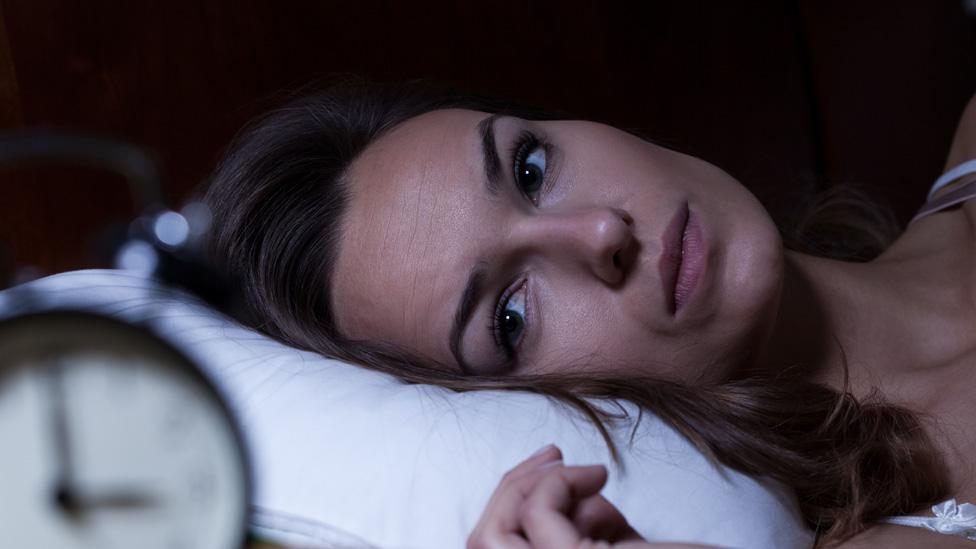
- Published13 May 2018
